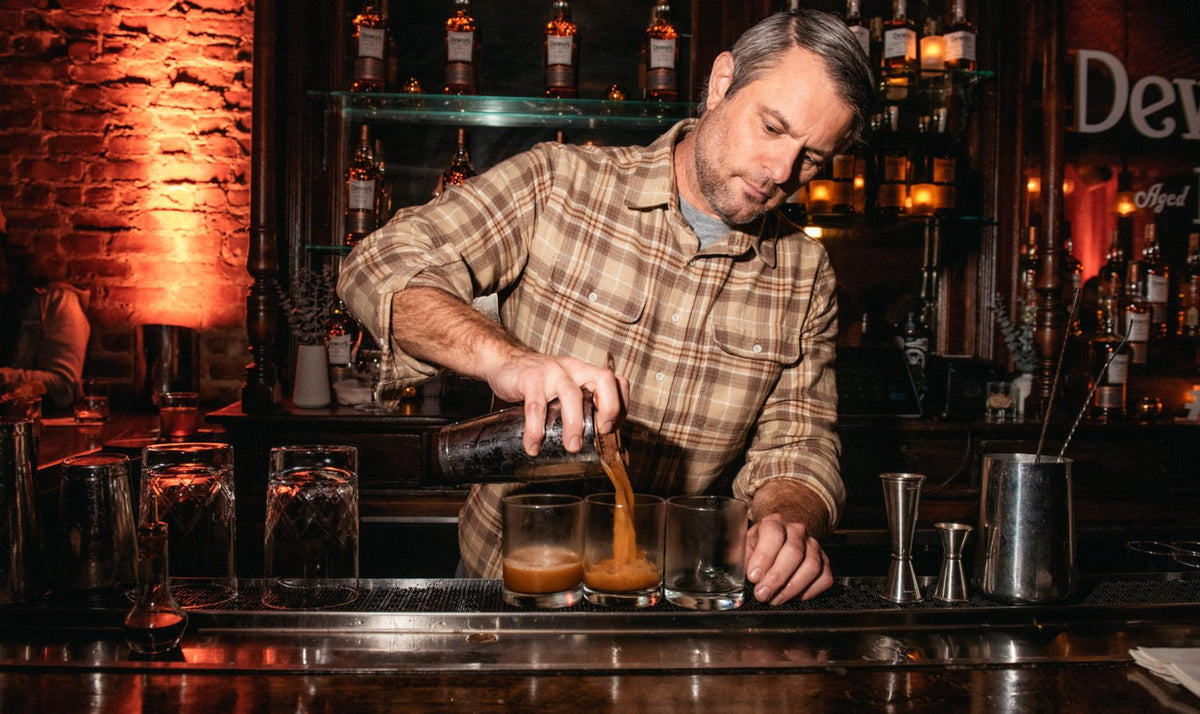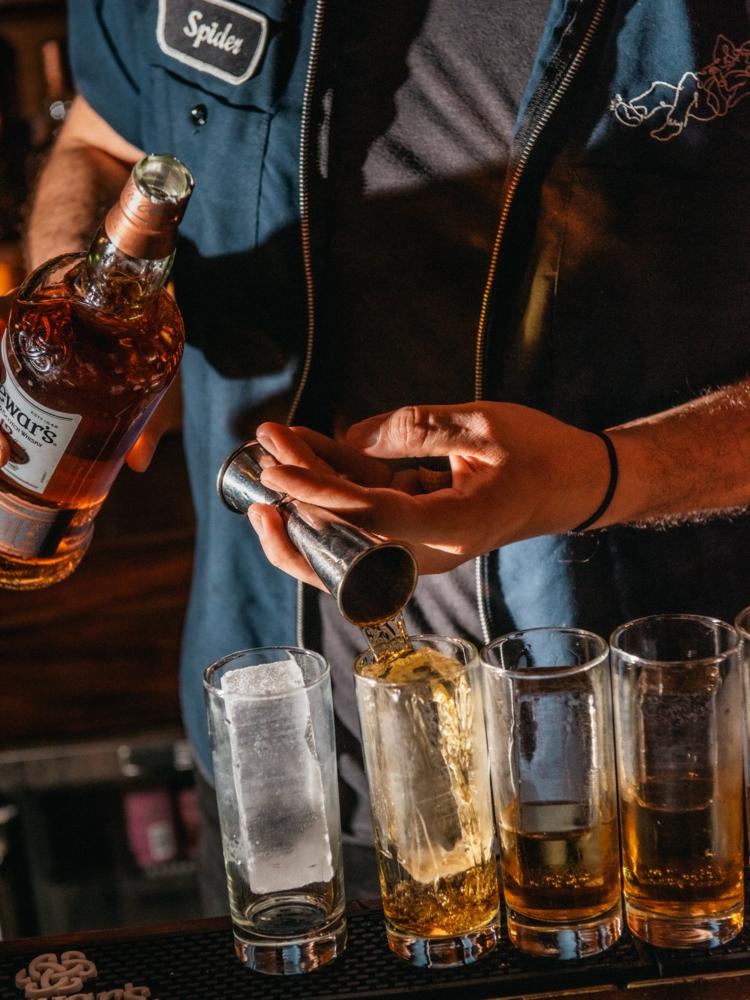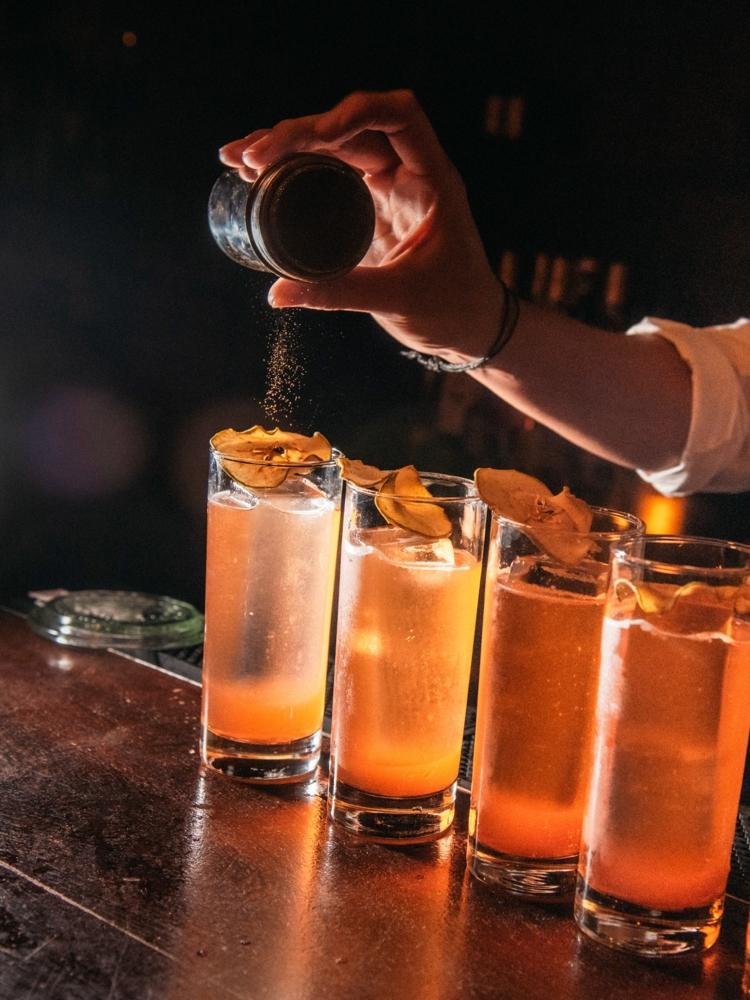
Scotch Cocktails: Going Beyond the Rob Roy
|
|
Time to read 4 min

|
|
Time to read 4 min
If you walk into a bar in America today and ask for a Scotch cocktail, odds are you’ll be served a Rob Roy.
Don’t get us wrong. We appreciate a good Rob Roy and there are plenty of times when this Scotch-whisky take on the Manhattan is just exactly the drink we need. But its ubiquitousness is still a little bit disappointing, given that the world of Scotch cocktails used to be much bigger. It would be nice to have a few more options.
When blended Scotch whisky first broke into the American market, at the beginning of the 1890s, it was the first Golden Age of the Cocktail. At first, though, Americans pretty much only drank this new breed of Scotch cut with soda water, like they did in Britain. Over there, they gave the drink the imaginative name “Whisky-Soda” and drank it at room temperature. We called that a “Highball” and put ice in it, but that’s as far as American creativity went with the spirit. No matter: Scotch Highballs were a sensation; just the thing to have after a round of golf, the old Scottish game that was also being introduced to America at the time.
There had long been Scotch whisky in America, but it was all single malt, shipped in barrels from the distillery and aged over here. That sounds like heaven, but that aging was brief and many of the malts were rather more fiery and smoky than made for pleasant sipping. American bartenders used it in Hot Toddies, the most basic and elemental of winter warmers, and basically nothing else: as the St. Louis Post-Dispatch wrote in 1893, “there was a time in this country when no man put Scotch whisky into his mouth except when it was mixed with hot water, a little sugar and a piece of lemon.”
But the new blends, such as the one Tommy Dewar crisscrossed America promoting in 1892, were nothing like that old Toddy-fuel (Dewar, by the way, might have christened the Highball on that trip; so he later claimed, anyway, and not impossibly). These whiskies were well aged, balanced and smooth, with enough body and flavor to give a cocktail backbone, but not so much that they squeezed out the other flavors. Before long, the more mixologically-inclined American bartenders began to take notice.
The first one to hit paydirt appears to have been Henry Orphal, the bartender at the Duke House in Hoboken, New Jersey. One day in 1894 or 1895 a group of Manhattan drinkers at his bar invited a Scotch whisky sales rep to drink with them; he would, if the drink was Scotch—his brand, of course. The solution? Scotch Manhattans. Orphal mixed up a bunch, to everyone’s delight. The group came up with a Scottish name for the thing (Rob Roy McGregor was a Scottish folk hero) and went out and spread the word. It helped that it was easy: by the late 1890s, pretty much every American bartender could mix a Manhattan in his sleep.
But that wasn’t the whole of early Scotch mixology. There were other drinks. A few cocktails—the Automobile, the Modern—ventured beyond the safe Scotch-vermouth-bitters formula. Popular tall drinks included the Ramsay Cooler, which was a Highball with a long spiral of lemon peel (note that this was also known, wrongly, as the “Remsen Cooler,” which was actually a gin drink), the Mamie Taylor, with Scotch, ginger beer and lime (in 1941, head bartender Wes Price at Hollywood’s Cock ’n’ Bull pub would substitute vodka for the Scotch and create the Moscow Mule) and the Morning Glory Fizz, with lemon juice, sugar, egg white and a few bracing dashes of absinthe.
However, if the generation of American bartenders and drinkers before Prohibition had a large repertoire of whisky drinks to draw on, that would be blown away in 1920 with the enforcement of the Eighteenth Amendment. Speakeasy Scotch was usually cut with grain alcohol and water, and speakeasy mixology was largely rudimentary, if not downright incompetent.
The truth is that most of the Scotch cocktails were largely forgotten and for decades could only be found in the dusty pages of old cocktail books slowly disintegrating on library shelves. The single malt boom in the 1990s and early 2000s certainly didn’t help matters as folks became convinced that you couldn’t add anything to Scotch–not even ice–lest you ruin your dram.
But finally, the tide seems to be changing. A number of the country’s best bars are beginning to feature Scotch cocktails on their menus. And we're very encouraged by what we saw at a recent Dewar's Repeal Day party in New York where 12 top bartenders made 12 wonderfully original cocktails with the newly reformulated Dewar's 12 Year Old Whisky.
Hopefully this is just the beginning of a new chapter in Scotch cocktail history. We can’t wait to see what bartenders come up with. Save us two seats at the bar!
Here are recipes for two of the delicious Scotch cocktails served at the Repeal Day party from top bartenders Jeffrey Morgenthaler and Christine Wiseman.
Created by Jeffrey Morgenthaler
1.5 parts Dewar’s 12 Year Old Scotch Whisky
1.5 parts Fresh apple juice
.5 part Amaro
1 tsp Allspice dram
Glass: Old-Fashioned
Garnish: Orange twist
Add all of the ingredients to a shaker and fill with ice. Shake, and strain into an Old-Fashioned glass filled with fresh ice. Garnish with an orange twist.
Created by Christine Wiseman
2 parts Dewar’s 12 Year Old Scotch Whisky
.5 part Martini Riserva Speciale Ambrato Vermouth
.25 part Chamomile Honey*
White peach & jasmine soda
Garnish: Lemon twist
Glass: Collins
Add all of the ingredients, except the white peach & jasmine soda, to a mixing glass and fill with ice. Stir, and strain into a Collins glass filled with a single long ice cube. Top with the soda.
1000g Honey
500g Water
7g Chamomile
Add the honey and water to a pot. Over a low heat, stir until the honey is fully combined. Remove from the heat and add the chamomile. Let steep for 15 minutes and then strain into a clean bottle.
Please Sip Responsibly. This article is produced in sponsorship with one of our spirited partners.


